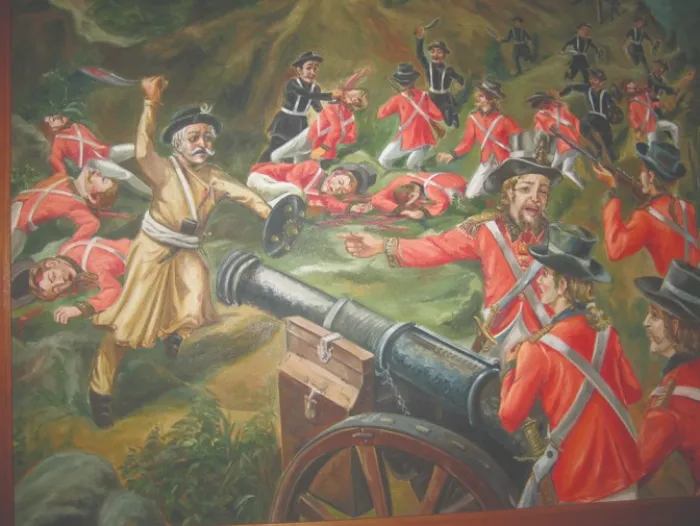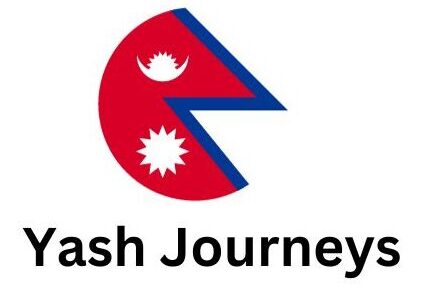Nepal, a beautiful country nestled in the Himalayas, holds a captivating history intertwined with its neighboring nation, India. As you explore the depths of this article, you will uncover the significant moment in time when Nepal gained its independence from India.
With rich cultural heritage and a compelling past, this journey will shed light on the date that marked Nepal’s separation from its southern counterpart. So prepare to embark on a journey of discovery, and let us delve into Nepal’s quest for independence.
Background of Nepal and India
Geographical Location
Nepal, a landlocked country in South Asia, is situated in the Himalayas between China to the north and India to the south, east, and west. With a diverse terrain ranging from majestic mountains to fertile plains, Nepal is home to breathtaking natural beauty. In contrast, India, its southern neighbor, is a vast country with a diverse landscape, encompassing deserts, mountains, and coastal regions. The shared border between Nepal and India spans over 1,850 kilometers, making these two nations geographically intertwined.
Historical Ties
The histories of Nepal and India have been closely interwoven for centuries. Their shared cultural heritage, religious traditions, and economic exchanges have laid the foundation for strong historical ties. The influence of Indian culture and philosophy, primarily Hinduism and Buddhism, played a crucial role in shaping the cultural fabric of Nepal. Additionally, both nations have witnessed significant political interactions throughout their histories, leading to the establishment of treaties, alliances, and conflicts between them.
Early History and Unification of Nepal
Kingdoms and Empires in the Region
Dating back over two thousand years, the regions now known as Nepal and India have been home to various kingdoms and empires. From the ancient Lichhavi dynasty to the mighty Mauryan and Gupta empires, the region has witnessed the rise and fall of powerful ruling entities. Throughout this time, the political landscape constantly evolved, with smaller kingdoms emerging, conquering, and merging with others.
Unification under King Prithvi Narayan Shah
In the latter half of the 18th century, King Prithvi Narayan Shah, the visionary monarch of the Gorkha Kingdom in western Nepal, led a campaign to unify the fragmented territories. His ambition was to create a strong and independent nation that could safeguard Nepal’s sovereignty against external powers. By successfully annexing surrounding kingdoms and expanding his realm, King Prithvi Narayan Shah laid the foundation for a united Nepal.

British Influence and Treaty of Sugauli
Emergence of British in the Indian Subcontinent
In the early 17th century, various European powers, including the British East India Company, established trading posts in the Indian subcontinent. Over time, the British influence grew stronger, leading to the establishment of British colonial rule in many parts of India. As the British expanded their dominion, they also sought to exert influence over the neighboring regions, including Nepal.
Anglo-Nepalese War
The Anglo-Nepalese War, fought between 1814 and 1816, marked a significant turning point in the relationship between Nepal and the British East India Company. The war was triggered by territorial disputes and Nepal’s attempts to expand its dominion into the British-held territories. Despite initial successes, the Nepalese forces were eventually defeated by the superior military might of the British.
Treaty of Sugauli and Its Impact
The Treaty of Sugauli, signed in 1816, concluded the Anglo-Nepalese War and brought significant changes to the political landscape of Nepal. As per the treaty, Nepal lost a substantial portion of its territories, including parts of present-day Uttarakhand and Himachal Pradesh in India. Moreover, Nepal had to accept British influence in its foreign affairs and provide a British Resident in Kathmandu, further cementing its position as a British protectorate.
Nepal as a British Protectorate
Role of British Resident
The appointment of a British Resident in Kathmandu marked a new phase in Nepal’s relationship with the British. The Resident acted as a liaison between the British government and the ruling authorities in Nepal. Their primary role was to ensure compliance with the terms of the Treaty of Sugauli and to oversee the political affairs of the nation. This arrangement allowed the British to exert a significant degree of control over Nepal’s internal and external affairs.
Shifting Dynamics in British India
Meanwhile, in British India, the Indian independence movement gained momentum, as various leaders and organizations fought for self-rule and freedom from British colonialism. These shifting dynamics in British India had a profound impact on Nepal, with nationalist sentiments spreading among the educated elite and influencing the desire for democratic reforms within the country.
Administrative Changes in Nepal
Under British influence, Nepal experienced administrative changes aimed at aligning its governance with British colonial systems. The Rana regime, which gained power in the mid-19th century and ruled Nepal for over a century, introduced several reforms inspired by British administrative practices. This period saw centralized control, a feudalistic social structure, and limited political participation, which would eventually pave the way for significant political transformations in Nepal.
Rise of Democracy and the Abolition of Rana Rule
Rana Regime in Nepal
The Rana regime, established in Nepal in 1846, wielded autocratic power and controlled the state machinery for generations. During their rule, the Ranas marginalized the monarchy and consolidated their authority, subduing any challenges to their power. This period was characterized by political oppression, economic exploitation, and limited opportunities for the broader population.
Growth of Anti-Rana Sentiment
As the winds of change blew across the Indian subcontinent, Nepal also witnessed a gradual rise in anti-Rana sentiment. Educated Nepalese, inspired by the principles of democracy, equality, and freedom, began questioning the autocratic rule of the Ranas. The people’s dissatisfaction with the Rana regime grew, and calls for political reforms and democratization became stronger.
The 1950 Democratic Movement
The 1950 democratic movement, also known as the “Jana Andolan,” marked a significant turning point in Nepal’s history. The movement, fueled by popular discontent and supported by the Nepali Congress, called for an end to the Rana rule and the establishment of a democratic system. After a period of intense protests, strikes, and armed resistance, the Rana regime finally crumbled, heralding a new era for Nepal.
The Treaty of Peace and Friendship with India
Significance of the Treaty
The Treaty of Peace and Friendship, signed between Nepal and India in 1950, holds immense significance in the bilateral relationship between the two countries. The treaty solidified the commitment to mutual peace, friendship, and cooperation between Nepal and India, laying the foundation for a long-lasting diplomatic partnership. It also marked a shift away from British influence towards closer ties with the newly independent India.
Terms and Agreements
The treaty included various provisions, emphasizing equal treatment, non-interference in internal affairs, and the facilitation of closer economic and cultural cooperation. It also established a framework for trade relations and open borders, allowing for the free movement of people and goods between the two nations. Additionally, the treaty recognized the historical ties and respect for each other’s sovereignty, further strengthening the foundation of the bilateral relationship.
Nepal’s Dependency on India
While the treaty aimed to foster mutual benefits and cooperation, some critics argue that it resulted in Nepal’s increased dependency on India. The open border and trade relations, while promoting economic growth, also raised concerns about Nepal’s vulnerability to Indian influence. Nepal’s landlocked status and its reliance on India for essential supplies and trade routes have further fueled debates about the extent of Nepal’s economic and political autonomy.
Special Relationship between Nepal and India
Open Border and Trade Relations
The open border between Nepal and India, established under the Treaty of Peace and Friendship, has played a significant role in shaping the unique relationship between the two countries. This border allows for the free movement of people, facilitating cultural exchanges, tourism, and familial ties. Trade between Nepal and India has also thrived, with India being Nepal’s largest trading partner, accounting for a significant portion of Nepal’s imports and exports.
Indian Influence in Nepalese Politics
Given their geographical proximity and historical ties, India has wielded considerable influence in Nepalese politics. Over the years, Nepalese leaders have sought political support and guidance from their Indian counterparts, particularly during times of political transition or crisis. This influence, however, has sometimes led to controversies, with critics arguing that it compromises Nepal’s sovereignty and interferes with its internal affairs.
Controversies and Challenges
The special relationship between Nepal and India has not been without its share of controversies and challenges. Disputes over water resources, border issues, and political interference have occasionally strained bilateral relations. Additionally, some sectors in Nepal have expressed concerns about perceived economic and cultural dominance by India, leading to calls for a more balanced and equitable relationship.
The 2006 Revolution and the End of Monarchy
The People’s Movement and Pro-Democracy Protests
The 2006 revolution, also known as the “April Revolution” or “Second Jana Andolan,” marked a significant chapter in Nepal’s modern history. Sparked by widespread dissatisfaction with the monarchy’s autocratic rule and supported by various political parties and civil society groups, the movement demanded the establishment of a democratic republic and an end to King Gyanendra’s direct rule.
Fall of the Monarchy
In response to the people’s movement and escalating protests, King Gyanendra was compelled to step down from power in 2008, effectively ending the monarchy in Nepal. Subsequently, Nepal transitioned into a federal democratic republic, with the Constituent Assembly playing a crucial role in shaping the new political system.
New Political System in Nepal
The adoption of the new constitution in 2015 affirmed the principles of federalism, secularism, and inclusive governance. It enshrined the rights and representation of various marginalized groups, creating space for greater political participation and diversity. While Nepal’s transition to a federal democratic republic brought newfound political freedoms, challenges in governance, implementation, and addressing historical grievances persist.
Recent Developments and Independent Nepal
Nepal’s Sovereignty and International Relations
As an independent nation, Nepal has cultivated diplomatic ties with numerous countries, seeking to balance its relations in the global arena. While Nepal maintains strong historical and cultural connections with India, it has also pursued diplomatic relations with other nations, including China, the United States, and countries across the world. Nepal remains committed to upholding its sovereignty and pursuing its national interests in the international community.
Economic Growth and Challenges
Nepal has made significant strides in its economic growth and development. The country has witnessed improvements in sectors such as tourism, hydropower, and agriculture, contributing to overall economic progress. However, Nepal faces numerous challenges, including poverty, infrastructure gaps, and the need to diversify its economy. Balancing economic growth with sustainable development and addressing income inequality remain crucial objectives for the nation.
Nepal’s Milestones as a Free Nation
Since gaining independence, Nepal has achieved several milestones in various fields. Notable accomplishments include progress in education and healthcare, increased access to basic services, and advancements in gender equality and social inclusion. Nepal’s rich cultural heritage and natural beauty continue to attract tourists from around the world, contributing to its reputation as a popular travel destination. Furthermore, Nepal’s successful peace process and ongoing efforts to strengthen democracy have garnered international recognition.
Conclusion
The historical ties between Nepal and India have laid the foundation for a unique and complex relationship that transcends mere geographical proximity. From early kingdoms and empires to the British influence and subsequent independence, Nepal’s journey has been intertwined with that of India.
While the special relationship between the two countries has brought tangible benefits, it has also posed challenges and controversies. As Nepal continues to navigate its path as an independent nation, it seeks to strike a delicate balance between preserving its sovereignty and forging strong ties with its closest neighbor, India, and the wider international community.

